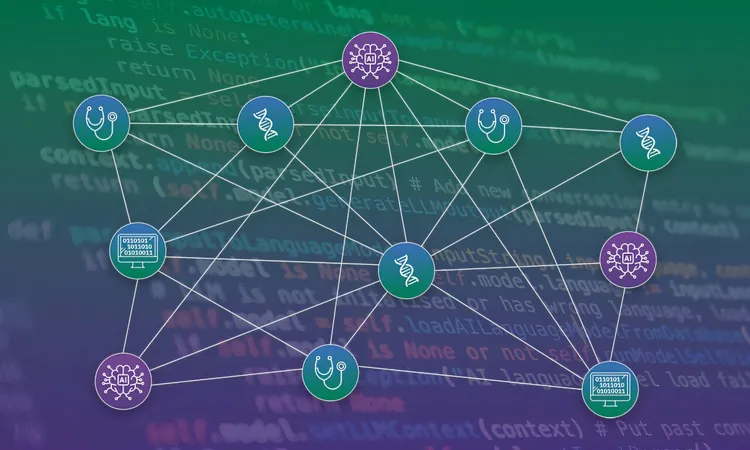
Revolutionizing Biomedical Research with BioChatter: The Future of Language Models
2025-01-22
Author: Mei
The Challenge of Language Models in Biomedical Research
In recent years, large language models (LLMs) have reshaped various fields, enhancing content creation, coding, and search engine efficiency. However, their application in biomedical research is still hampered by substantial challenges, including issues of transparency, reproducibility, and the need for extensive customization.
For many biomedical researchers, tailoring LLMs to fit specific research questions has proven to be an overwhelming task, demanding not only programming knowledge but also expertise in machine learning. These complexities have significantly limited the use of LLMs for essential research processes, such as data extraction and comprehensive analysis.
Introducing BioChatter
Enter BioChatter, a groundbreaking solution unveiled in a publication by Nature Biotechnology. This open-source Python framework is poised to bridge the gap in utilizing LLMs for biomedical research, aligning with the principles of open science and prioritizing accessibility.
Julio Saez-Rodriguez, Head of Research at EMBL's European Bioinformatics Institute (EMBL-EBI), emphasized the potential of LLMs in transforming biomedical research. He stated, "With the right tools that foster transparency and reproducibility, BioChatter empowers researchers to seamlessly integrate LLM functionalities into their work."
Versatile Integration and Enhanced Data Analysis
A remarkable feature of BioChatter is its adaptability across various biomedical disciplines, allowing users to extract data from an array of biomedical databases and literature seamlessly. Utilizing the BioChatter API, researchers can instruct LLMs to access real-time data and integrate with bioinformatics tools, enhancing their research capabilities significantly.
The platform is designed to interface with BioCypher-built knowledge graphs, which link extensive biomedical data sets—ranging from genetic mutations to drug-disease correlations. By leveraging these graphs, researchers can analyze intricate data sets to identify genetic variations linked to diseases or comprehend drug mechanisms more effectively.
Sebastian Lobentanzer, a Postdoctoral Researcher at Heidelberg University Hospital, voiced the initiative’s commitment: "Our aim is to reduce the barriers for biomedical researchers in harnessing the power of large language models. BioChatter creates an open, adaptable framework tailored to diverse research needs, allowing scientists to focus more on their research and less on technical hurdles."
Real-World Transformations on the Horizon
Looking ahead, the BioChatter team is working diligently to integrate their framework within life science databases, notably collaborating with Open Targets—a prominent public-private alliance utilizing human genetics data to identify and prioritize drug targets. This integration promises to refine the way users navigate and utilize biomedical data within the Open Targets Platform.
Additionally, a complementary system named BioGather is in development, aiming to extract intelligence from diverse clinical data types including genomics, medical records, and imaging. Together, these tools will empower researchers to tackle complex challenges prevalent in personalized medicine, disease modeling, and innovative drug development strategies.
Conclusion
Stay tuned, as BioChatter not only aims to enhance research methodologies but could very well redefine the landscape of biomedical innovation. The future of biomedical research is bright, and with tools like BioChatter, it’s more accessible than ever!




 Brasil (PT)
Brasil (PT)
 Canada (EN)
Canada (EN)
 Chile (ES)
Chile (ES)
 Česko (CS)
Česko (CS)
 대한민국 (KO)
대한민국 (KO)
 España (ES)
España (ES)
 France (FR)
France (FR)
 Hong Kong (EN)
Hong Kong (EN)
 Italia (IT)
Italia (IT)
 日本 (JA)
日本 (JA)
 Magyarország (HU)
Magyarország (HU)
 Norge (NO)
Norge (NO)
 Polska (PL)
Polska (PL)
 Schweiz (DE)
Schweiz (DE)
 Singapore (EN)
Singapore (EN)
 Sverige (SV)
Sverige (SV)
 Suomi (FI)
Suomi (FI)
 Türkiye (TR)
Türkiye (TR)
 الإمارات العربية المتحدة (AR)
الإمارات العربية المتحدة (AR)